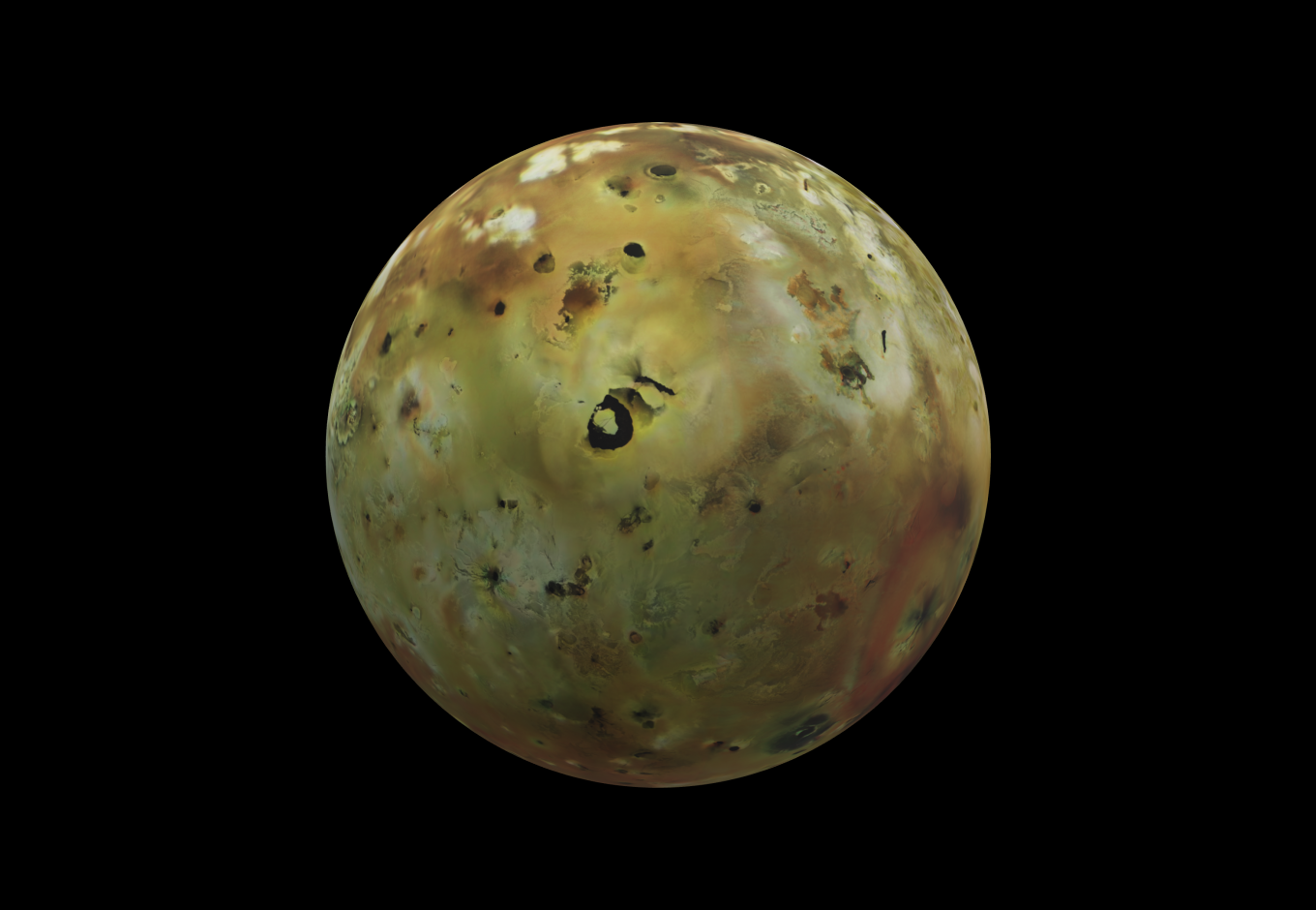Loki, the space volcano close to eruption
Jupiter’s moons are made of rocks, layers of water and ice, but not Io. The fourth moon of the solar system is actually a gigantic volcanic world. Its steep mountains several kilometers high and its irregular depressions form the volcanic calderas.
On this burning surface, more than 400 active volcanoes are recorded. Among them, Loki Patera is the most active and the most visible. It extends over a lava lake 202 km in diameter, directly connected to a reservoir of magma located at depth.
On his orange and bluish-hued planet, Loki Patera is this huge spot, surrounded by black. Even millions of kilometers away from Earth, you can not miss it. In a statement published in September 2019 on Europlanet Society, planet specialist Julie Rathbun explains that: “Loki is the largest and most powerful volcano on Io, it is so bright in the infrared that we can detect it at using telescopes on the Earth. “
Visible more than 628.3 million km, this volcano has been the subject of many studies for twenty years that have allowed to outline periodicities in its peaks of activities. Every 500 days, Loki Patera is supposed to erupt. His last stroke of anger? May 2018. While Julie Rathbun predicted that he would re-sign during the month of September 2019, it still is not.
But let’s not forget one thing. The volcano, named after the northern god of discord, Loki, is just as unpredictable as him …

Global view of the moon Io, taken during the Galileo mission initiated by NASA on September 19, 1997. The white and gray tints correspond to the deposition of sulfur dioxide frost. The red areas and the black spots represent a recent volcanic activity, remarkable thanks to the high temperatures and the surface changes of Io.

This image, captured by the “Voyager 1” spacecraft, in 1996, shows a cloud of ash rising from Loki Patera, the largest volcano in the moon Jupiter Io.

On the moon Io, the Galileo spacecraft captures a volcanic eruption from Loki. The recolored image highlights white and orange areas, those of the hot lava that extends over Loki. The thin curve, a bright orange, represents a refreshing lava flow over 60 km long. The two small bright spots are, as for two, molten rocks.

NASA’s Galileo mission also revealed in 1997 another active volcano, Pillan. Near Io’s equator, Pillan is captured during an eruption.

Thanks to the space probe Galileo, launched by NASA, Io, the most volcanic body of the solar system is represented here with the highest resolution. The smallest elements are no less than 2.5 km.
